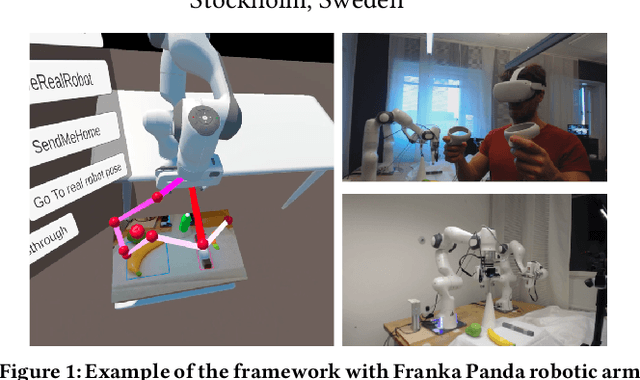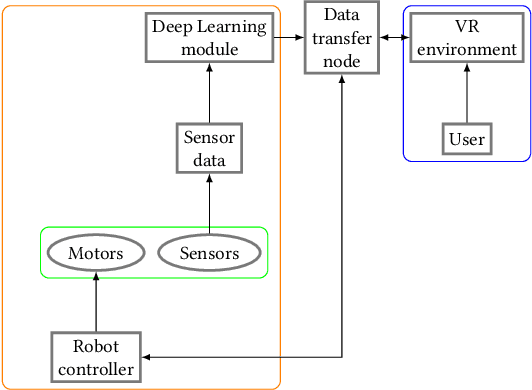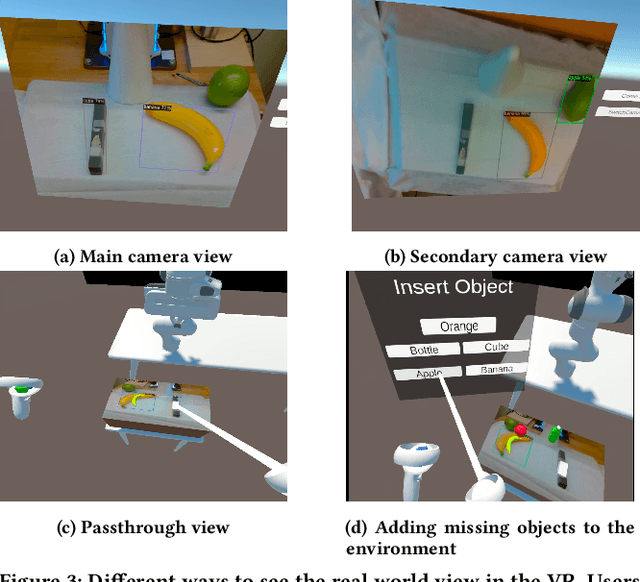Andre Pereira
Happily Error After: Framework Development and User Study for Correcting Robot Perception Errors in Virtual Reality
Jun 26, 2023Abstract:While we can see robots in more areas of our lives, they still make errors. One common cause of failure stems from the robot perception module when detecting objects. Allowing users to correct such errors can help improve the interaction and prevent the same errors in the future. Consequently, we investigate the effectiveness of a virtual reality (VR) framework for correcting perception errors of a Franka Panda robot. We conducted a user study with 56 participants who interacted with the robot using both VR and screen interfaces. Participants learned to collaborate with the robot faster in the VR interface compared to the screen interface. Additionally, participants found the VR interface more immersive, enjoyable, and expressed a preference for using it again. These findings suggest that VR interfaces may offer advantages over screen interfaces for human-robot interaction in erroneous environments.
What you see is what you get: A VR Framework for Correcting Robot Errors
Jan 17, 2023


Abstract:Many solutions tailored for intuitive visualization or teleoperation of virtual, augmented and mixed (VAM) reality systems are not robust to robot failures, such as the inability to detect and recognize objects in the environment or planning unsafe trajectories. In this paper, we present a novel virtual reality (VR) framework where users can (i) recognize when the robot has failed to detect a real-world object, (ii) correct the error in VR, (iii) modify proposed object trajectories and, (iv) implement behaviors on a real-world robot. Finally, we propose a user study aimed at testing the efficacy of our framework. Project materials can be found in the OSF repository.
 Add to Chrome
Add to Chrome Add to Firefox
Add to Firefox Add to Edge
Add to Edge